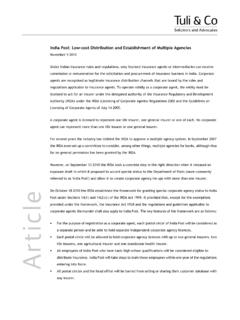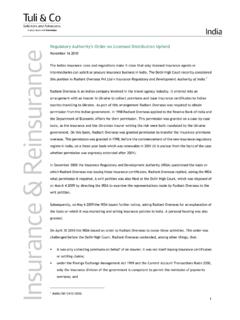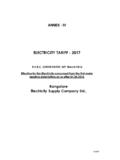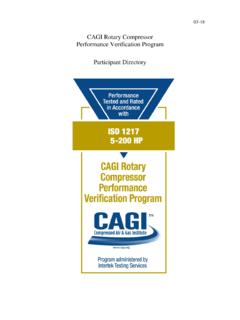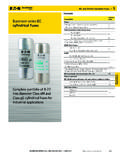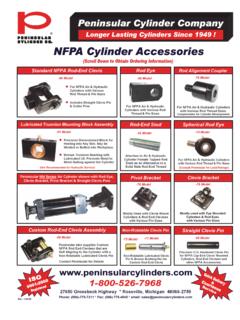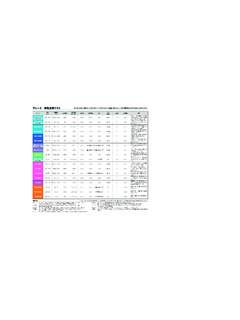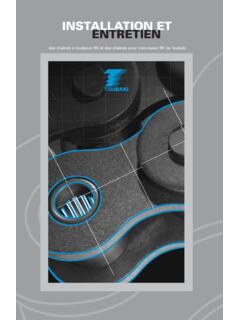Transcription of IRDA Guidelines on Money Laundering - Tuli
1 1 IRDA Guidelines on Money Laundering October 02 2007 Provisions Amendments Comment In 2002 Parliament passed the Prevention of Money Laundering Act 2002. The act applies to every banking company, financial institution and intermediary, and extends to the insurance industry. Implementation of the act was deferred until July 1 2005 while issues raised by various sectors of the financial services industry were addressed. These issues primarily concerned practical problems in implementing the act's provisions.
2 The issues raised by the insurance industry took longer to resolve, but on March 31 2006 the Insurance Regulatory and Development Authority (IRDA) issued its Anti- Money Laundering Guidelines , effective from August 1 2006. Provisions The Guidelines provide as follows: Life insurers must look out for suspicious or dubious financial transactions and notify any such transactions to the Office of the Director of the Financial Intelligence Unit. A suspicious transaction is a transaction (whether carried out in cash or not) that gives rise to reasonable grounds for suspicion that it may involve the proceeds of crime.
3 The Guidelines provide an illustrative list of suspicious transactions, including those where the prospect insists on anonymity or frequently requests a change in his or her address details. Insurers must have in place internal policies, procedures and controls to ascertain the true identities of their customers. These include: o appointing a compliance officer; o training existing and new employees and agents; o conducting internal audits and checks; and o having a policy for dealing with customer acceptances, customer identification and transaction monitoring - this policy must be filed with the IRDA and reviewed annually.
4 Insurers may not accept a premium of more than Rs50,000 ($1,222) in cash. The 'know your customer' provisions were the subject of particularly heated debate. For example, one provision requires insurers to include a recent photograph of the policyholder on all new insurance contracts. Certain insurers have questioned the need for this in cases where policy payments are made at banks, as banks are subject to the same rules and so already hold photographs of account holders. 2 Insurers were unsure why they needed to duplicate the process when it was just as effective to rely on the banks' procedures.
5 Amendments Insurers made a number of representations to the IRDA on this and other issues. On July 27 2006 the IRDA responded by relaxing the requirements in two respects: (i) it dispensed with the need for the retrospective application of the Anti- Money Laundering Guidelines from April 1 2004 and instead ordered retrospective compliance from January 1 2006; and (ii) it ruled that the Guidelines do not apply to insureds whose premiums are below Rs100,000 ($2,380). Although these were significant concessions, the IRDA continued to receive further representations seeking clarifications and exemptions, particularly in regard to the need for photographs.
6 It responded by issuing a circular in September 2006, in which it: relaxed the requirements in relation to the type of documentation required from policyholders under the 'know your customer' provisions, but ruled out general reliance on documentation that could be easily forged (eg, business cards and driving licences without photographs); refused to relax the requirement for proof of permanent residence and current residence; and based on feedback from the Financial Intelligence Unit, refused to relax the need for photographs "until further orders".
7 The circular noted that the IRDA had considered other requests but was unable to issue further modifications to the rules. The IRDA subsequently received a representation from a group of general insurers seeking a complete exemption from the Anti- Money Laundering Guidelines on the grounds that: (i) general insurance products are short-term contracts and are therefore less susceptible to Money - Laundering problems; and (ii) losses are investigated and assessed before claims are paid. On November 9 2006 the IRDA directed that general insurers: cannot have a blanket exemption from the Guidelines , but will need to follow them only at the time when a claim is made and payment is proposed, or if a policy is cancelled and a refund is due' are subject to the 'know your customer' procedures if a claim payment or premium on a policy is more than Rs100,000.
8 May not carry out any transactions with a blacklisted entity or individual, including individuals with suspected criminal backgrounds or terrorist links; and must have in place procedures to ensure that they do not cover assets which may have been purchased with the proceeds of Money Laundering . 3 These modified Guidelines apply to policies coming into force on or after January 1 2007. Comment The industry continues to press the IRDA to review the Anti- Money Laundering Guidelines , particularly the issue of photographs.
9 These are a significant operational and financial issue for insurers in circumstances where premium payments are low and the cost of obtaining photographs is disproportionately high, particularly in rural areas. The further representations seem to be having some effect; on March 2 2007 the IRDA relaxed the need for photographs on all individual policies where the annual premium is less than Rs10,000 ($240). There are also exemptions in place for standalone medical and health insurance. The negotiations are likely to continue.
10 Insurers do not dispute the objectives of or the need for the Guidelines , but rather question their application - particularly their impact on a relatively young industry which is incurring significant expenditure in setting up operations. For further information on this topic please contact Neeraj Tuli at Tuli & Co by telephone +91 11 2464 0906, fax +91 2464 0904 or email Originally edited by, and first published on.

